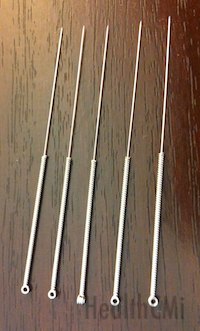Acupuncture Calms Anxiety Disorder - New Research
ON 23 FEBRUARY 2014.
A recent study concludes that acupuncture relieves generalized anxiety disorder (GAD), a condition characterized by excessively intense and debilitating chronic anxiety. 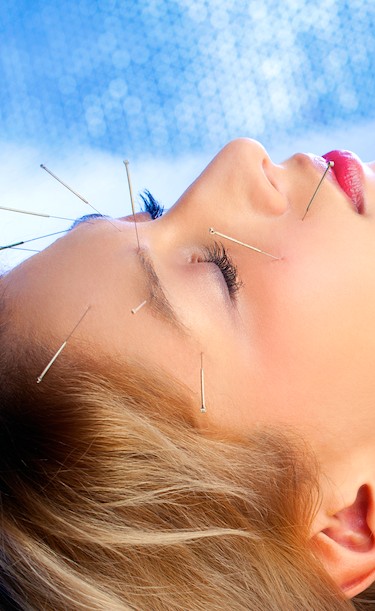 GAD sufferers cannot relax, startle easily and have impaired concentration. Overall, GAD sufferers are chronically worried and anxious.
GAD sufferers cannot relax, startle easily and have impaired concentration. Overall, GAD sufferers are chronically worried and anxious.
 GAD sufferers cannot relax, startle easily and have impaired concentration. Overall, GAD sufferers are chronically worried and anxious.
GAD sufferers cannot relax, startle easily and have impaired concentration. Overall, GAD sufferers are chronically worried and anxious.
In this new study, researchers note that “a number of Meta analysis and system evaluations point out that acupuncture treatment has more advantages than drugs in the treatment of anxiety disorders….” The researchers also note that acupuncture has a fast effective action and high compliance. In addition, acupuncture has a relatively minimal risk of side effects compared with drug therapy.
At the Healthcare Medicine Institute (HealthCMi), we promote acupuncture continuing education with acupuncture CEU and acupuncture PDA courses online. Our news division reports the latest in acupuncture and herbal medicine research. Most news is based on modern scientific reports. This recent study stands out because its basis is both in Traditional Chinese Medicine (TCM) classical theory and modern biomedical research.
The researchers note that acupuncture is both safe and effective. A trend towards increased usage of acupuncture for GAD is partially due to the risk of side effects from drug therapy. Benzodiazepines are major anti-anxiety medications but there is a risk vertigo, sleepiness and addiction. SSRIs (serotonin reuptake inhibitors) and norepinephrine reuptake inhibitors are also important drugs for anti-anxiety treatments. However, side effects including nausea, irritability, sexual dysfunction, headaches, high blood pressure, dizziness, sweating and digestive disturbances complicate use of these medications.
The researchers note that GAD affects approximately 2 - 4.7% of the population in China and approximately 3% in the USA. GAD impacts work productivity, studies and may lead to suicide. Furthermore, the incidence of GAD is increasing.
The researchers based their conclusion on meta-analyses and biomedically based studies. They also give a detailed Traditional Chinese Medicine (TCM) theoretical and practical analysis of acupuncture for the treatment of anxiety disorders. The conventional scientific evidence demonstrates that acupuncture benefits brain biochemistry and produces significant positive patient outcomes. The TCM analysis details proven methods to achieve clinical results, however, the terminology is less accessible to mainstream doctors than the biomedical evidence.
The researchers reviewed scientific evidence including the following studies:
The mechanism of post receptor signal transduction pathway cAMP-CREB -BDNF in acupuncture against depression.Study on the role of post receptor signal transduction pathway cAMP-CREB-BDNF by acupuncture intervention in the rat model of depression.Clinical study on acupuncture treatment of Depression Insomnia.Research of mechanism of acupuncture regulating signal transduction cAMP-CREB-BDNF in hippocampus of depression rats.Research of mechanism of antidepressant acupuncture based on glutamic acid circulation guided by glial cell medium.
The mechanism of post receptor signal transduction pathway cAMP-CREB -BDNF in acupuncture against depression.Study on the role of post receptor signal transduction pathway cAMP-CREB-BDNF by acupuncture intervention in the rat model of depression.Clinical study on acupuncture treatment of Depression Insomnia.Research of mechanism of acupuncture regulating signal transduction cAMP-CREB-BDNF in hippocampus of depression rats.Research of mechanism of antidepressant acupuncture based on glutamic acid circulation guided by glial cell medium.
The research demonstrates a clear pattern of acupuncture’s ability to benefit the brain, bodily biochemistry and to produce positive patient outcomes in the treatment of both depression and anxiety. This aspect of the research is highly accessible to a wide audience within the medical community. What follows next is comprehensible within the TCM system but is external to conventional semantics and theoretical constructs.
The researchers detailed TCM approaches to the treatment of GAD. The terminology includes terms such as Lungs and Kidneys, which do not correlate to biomedical lungs and kidneys in a one-to-one correspondence. Note that Lungs and Kidneys are capitalized because they represent broader concepts including the entire respiratory system and water circulation within the human body. As a result of semantic and translation issues, this type of research is often overlooked within the conventional biomedical community as there is no basis to understand the concepts presented in biomedicine. The findings are comprehensible only within the framework of those trained in the TCM system, a tightly contained hermeneutical construct.
The researchers have discovered that a combination of acupuncture points LU7 (Lieque) and KI6 (Zhaohai) are potent clinical tools in the fight against generalized anxiety disorder. The translated text notes that:
Lieque (LU7) is the intersection point of lung meridian and Ren meridian. Lung plays an important role in movement of qi, blood and body liquid of the whole body, because (L)ung governs physical qi, distributes the essence of water and grain, helps heart promote blood circulation, regulates water metabolism with (K)idney. (Zhaohai) KI6 is the intersection point of (K)idney meridian and Yinqiao meridian. Yang of (H)eart descends to kidney and warms and nourishes yang of Kidney, while yin of (K)idney ascends to nourish yin of (H)eart, so that yin and yang are coordinated to make the viscera functions normally. Yinqiao meridian has the functions of nourishing eyes, governing the open and close of eyelid, nourishing skin, communicating yin and yang. Therefore, we select LU7 and KI6 of the eight confluent points to treat generalized anxiety disorder in clinical practice.
The researchers posit several main TCM concepts. They note that there is a “close relationship between generalized anxiety disorder and (the) heart, lung and kidney.” In TCM, anxiety is categorized under melancholia, palpitations and insomnia. The researchers note that the pathogenesis relates to qi stagnation, Heart and Kidney disharmony and the Heart, Lung and Kidney. The Heart is dominant in emotional changes because it governs blood and vessels. Stagnant Heart qi deprives nutrients to the internal organs and orifices leading to imbalances of qi, blood, yin and yang. This is the biophysical process in the development of melancholia.
The researchers note that the Kidneys have two major components related to GAD. The first is due to depletion. Emotional disturbances emerge when Kidney essence deficiency causes yin and yang imbalances. The second is due to congenital issues. The Kidneys govern bone and marrow and therefore congenital deficiency leads to emotional imbalances.
The study notes that Five Element theory maps the importance of Heart and Kidney balance to prevent excess fire due to yin deficiency that results in palpitations, insomnia and other conditions. Normally, “(H)eart yang descends to (K)idney to warm and nourish (K)idney yang, while (K)idney yin ascends to nourish (H)eart yin, so that water and fire are coordinated.” Internal organ imbalances leading to emotional disturbances emerge when there is Kidney yin deficiency or a disturbance of Heart yang leading to fire. 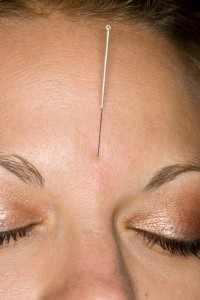

The researchers note that the Lungs govern qi, breathing, dispersing both outwardly and inwardly, water metabolism, convergence of vessels and coordinates activities of the internal organs. They cite a great work of TCM, The Classic of Difficult Issues, Eight Difficult Issues, “qi is the essence of a person.” Another classic work notes that “all diseases result from the disorder of qi.” As a result, many TCM doctors contend that melancholia is a disorder due to qi disturbance.
The study notes that the Lungs are important in the “generation and activity of qi.” The dispersing quality of the Lungs relates to “harmony of qi and the normal operation of five zang organs.” Further, the Lungs govern “the coordinative activities of viscera and the physical qi, which plays a coordinating role in the qi of lung upward and downward, outward and inward.” The researchers note that a lack of governance is a primary cause of qi stagnation. They add that the Lungs role in “convergence of vessels” helps the Heart to “promote and regulate the circulation of blood.” As a result, Lung dysfunction may lead to qi and blood stagnation affecting the internal organs and the acupuncture meridians.
The study cites the findings of Wei Zhang and Yun Meng in their publication The Relationship Between Lung And Six Stagnations. Here, the findings assert that melancholia is due to qi stagnation. Since the Lungs govern the qi of the entire body, it is an important component of melancholia. The findings of A. L. Zhang and K. J. Qi in the study Discussion On Depression From The Lung published in the Journal of Shandong College of Traditional Chinese Medicine were also included in the study. Zhang and Qi note that when the Lungs cannot govern the coordinative functions of the viscera, melancholia may develop. Qi stagnation may be caused by excessive emotions. Both a deficiency or excess of emotions can lead to the development of melancholia.
The study notes that there is an important relationship between the Ren meridian and anxiety. The researchers note that acupuncture point LU7 is an intersection point of the Lung and Ren meridians. LU7 is a confluent point of the Ren meridian and is paired with KI6, a confluent point of the Yinqiao vessel. As a confluent point, LU7 is indicated for treatment of the throat, chest and lungs. LU7 is especially important in the treatment of disorders affecting the head and neck.
The Ren meridian is “the sea of yin meridians” and “governs jing, blood, body fluid and adjusts qi of yin meridians in the whole body.” The Chong (Penetrating) vessel emanates from the “same source” as the Ren meridian and the Yinqiao vessel intersects the Chong vessel. Also, the Yinwei vessel intersects the Ren meridian at CV22 (Tiantu) and CV23 (Lianquan). Three yin meridians of the foot intersect the Ren meridian at CV3 (Guanyuan) and CV4 (Zhongji). The Ren meridian “converges triple burner qi” and asserts powerful actions on the body through its acupuncture points. CV8 (Shenque) relates “meridians, collaterals and viscera,” CV14 (Juque) is the front Mu point of the Heart and CV17 (Danzhong) is the front Mu point of the Pericardium. Additionally, CV4 (Guanyuan) and CV6 (Qihai) tonify conditions due to congenital deficiency. These acupuncture points tonify the Kidney and acts to “consolidate the root.” For these reasons, the Ren meridian can regulate the Heart and Kidney Qi to assist in the treatment of anxiety.
The study underscores the relationship between the Lungs and Heart. The Heart Shaoyin meridian connects the heart and lung organs. The Lungs govern qi whereas the Heart governs blood. Both govern circulation. The Lungs regulate respiration and the Heart regulates blood circulation. Together, the Heart and Lungs coordinate qi and blood.
The Lungs and Kidney are closely related. The Kidney meridian enters the lungs. The Kidneys receive the qi from the Lungs in respiration. The Lung metal is the mother element of Kidney water. Lung yin descends to the Kidneys while Kidney yin nourishes the Lungs. Lung and Kidney balance is responsible for the “distribution and excretion of water.”
The treatment of generalized anxiety disorder is related to LU7 and KI6, which are two of the eight confluent points affecting the eight extra meridians. The researchers note that the “eight extra meridians have the function of storage when overflowing, regulation, transferring qi, gathering qi of twelve meridians.” They note that when there is an overabundance in the twelve major meridians, the meridian qi and blood “overflow to and store in the eight extra meridians.” If there is a deficiency in the twelve major meridians, the eight extra meridians flow back to the nourish the twelve major meridians. The eight extra meridians function to regulate defensive qi, nutrient qi, meridians and internal organs. The researchers add that the eight confluent points affect all twelve meridians and cite the classic workIntroduction To Medicine, “Three hundred and sixty points of the whole body are unified by the sixty-six points in the hand and foot, which are unified by eight confluent points.”
The study notes that LU7 is a connecting point to the Large Intestine Yangming meridian of the hand. As a confluent point, LU7 connects to the Ren meridian. The Lung position in the upper jiao is the “canopy of the five zang organs, which governs qi generation and regulation.” The Lungs are also the first of the yin meridians, therefore, “the flow of qi starts from the lung.” The dispersing function of the Lung qi is essential to the “distribution of water and grain,” qi and blood to the other meridians. GAD pathology is Heart and Kidney disharmony and qi stagnation.
LU7 is the confluent point of the Ren meridian. As the essence of the twelve meridians, the Ren meridian is the “origin of qi generation, the convergence of qi, the sea of yin meridians, the root of pregnancy.” This reflects the function of LU7’s ability to nourish yin essence. If this essence is depleted, it cannot ascend to the Heart and fire will ensue thereby leading to emotional disturbances. Sufficiency of yin essence functions to “tranquilize the mind.”
The researchers note that KI6 (Zhaohai) is a Shu point of the foot Shaoyin meridian. KI6 is the confluent point of the Yinqiao vessel. The Kidneys store the essence and govern reproduction. As a result, KI6 functions to tonify Kidney essence. The Kidneys govern water circulation and metabolism. KI6 is therefore important in the treatment of water stagnation. The researchers note that Kidney water balances Heart fire and Kidney yang warms and nourishes the body. KI6 is effective in treating yin and yang imbalances including insomnia and drowsiness due to its connection to the Yinqiao vessel.
Several other TCM theories were presented in the study. The study notes that GV20 (Baihui) is the intersection of the three yang meridians of the Bladder, Gallbladder and Sanjiao meridians and the yin meridian of Foot Jueyin, the Liver meridian. They add that this is a major point for tranquilizing the mind along with Yintang (HN3).
This research is an interesting example of TCM insights. Many studies seek biomedical correlates for acupuncture and herbal medicine. This study uses these correlates but chooses to focus on TCM approaches to effective medicine rather than seeking substantiation through biomedical correlation.
Reference:
Observation on the mechanism of acupuncture treatment for generalized anxiety disorder using Lieque (LU7), Zhaohai (KI6) as the main acupoints. Lin, Chuhua; Zhao, Xiaoyan; Liu, Xing; Fu, Wenbin. Bioinformatics and Biomedicine (BIBM), 2013 IEEE International Conference on. 18-21, 12-2-13.
Observation on the mechanism of acupuncture treatment for generalized anxiety disorder using Lieque (LU7), Zhaohai (KI6) as the main acupoints. Lin, Chuhua; Zhao, Xiaoyan; Liu, Xing; Fu, Wenbin. Bioinformatics and Biomedicine (BIBM), 2013 IEEE International Conference on. 18-21, 12-2-13.
Source: www.healthcmi.com
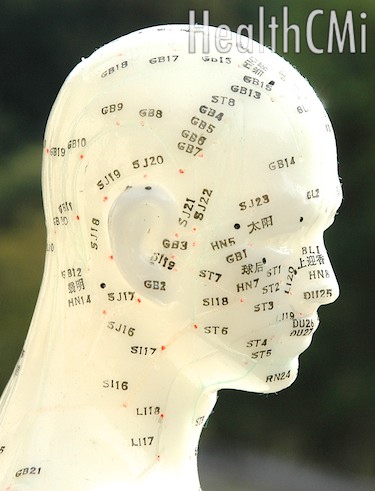
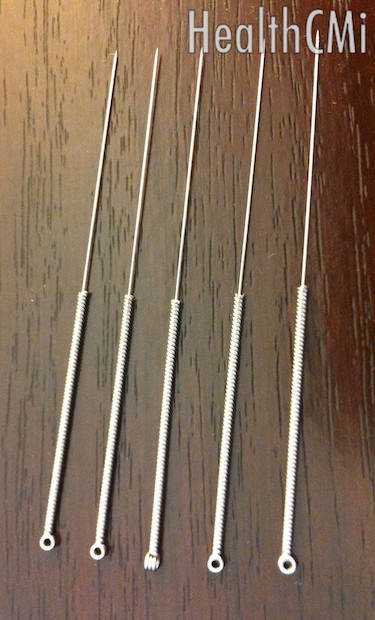
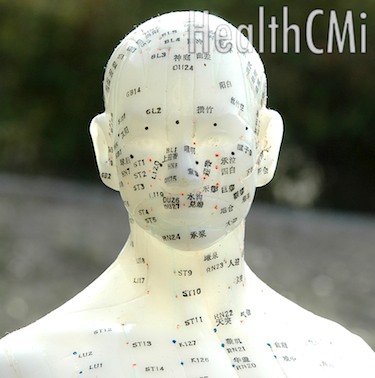 An investigation of 29,636 patients with TBI reveals that patients receiving acupuncture have a “lower probability of stroke than those without acupuncture treatment during the follow-up period.” Patients from 2000-2008 were reviewed from the Taiwan National Health Insurance Research Database. Follow-ups continued through the end of 2010. The study “showed significantly decreased risk of new-onset stroke events for patients with TBI who received acupuncture treatment. The present study is the first to report that acupuncture treatment was associated with reduced stroke risk for patients with TBI.”
An investigation of 29,636 patients with TBI reveals that patients receiving acupuncture have a “lower probability of stroke than those without acupuncture treatment during the follow-up period.” Patients from 2000-2008 were reviewed from the Taiwan National Health Insurance Research Database. Follow-ups continued through the end of 2010. The study “showed significantly decreased risk of new-onset stroke events for patients with TBI who received acupuncture treatment. The present study is the first to report that acupuncture treatment was associated with reduced stroke risk for patients with TBI.”